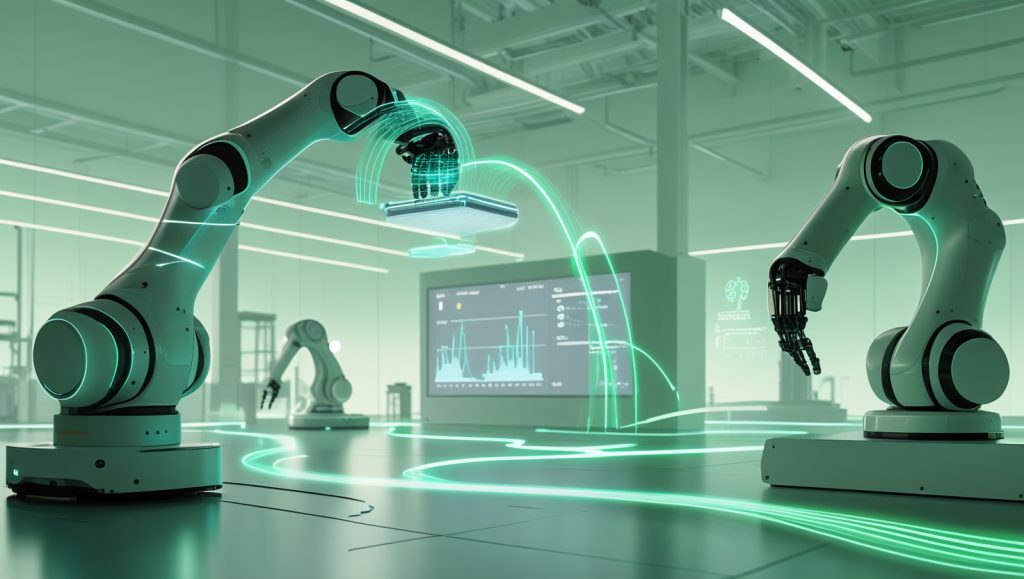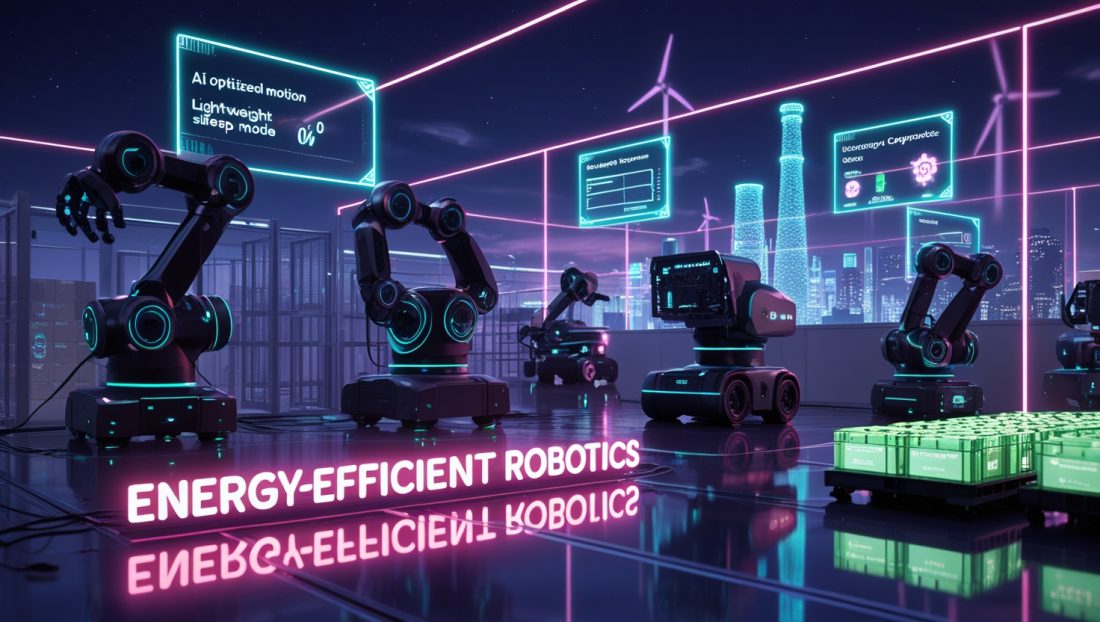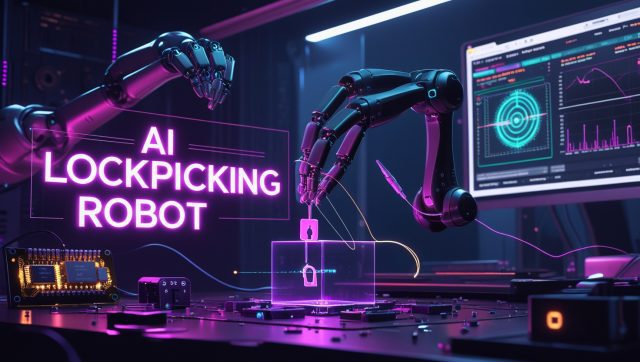Why Should Every Industry Care About Energy-Efficient Robotics in 2025?
What if robots could cut your factory’s energy bills by 40%, reduce waste by 30%, and address labor shortages—all while meeting strict climate regulations? This isn’t a utopian fantasy; it’s the reality of energy-efficient robotics in 2025. As global industries grapple with rising energy costs, carbon neutrality mandates, and a projected deficit of 85 million skilled workers by 2030 (McKinsey), sustainable robotics has shifted from a “nice-to-have” to a strategic imperative.
Take Tesla’s Gigafactory Berlin, for example. By integrating AI-driven robotic arms with solar-powered workflows, the facility reduced its annual energy consumption by 18% in 2024 while doubling output. Such stories underscore a pivotal truth: energy-efficient robotics aren’t just about environmental stewardship—they’re reshaping profitability, scalability, and global competitiveness. For deeper insights into how robotics is tackling global challenges, check out how Switzerland’s autonomous delivery robots are crushing supply chain issues.
1. AI-Driven Energy Optimization: Beyond Automation to Intelligent Efficiency

How Machine Learning Is Redefining Robotic Sustainability
Energy-efficient robotics powered by AI are setting new benchmarks for green automation. Machine learning enables robots to optimize every move, minimizing waste while maximizing output. This shift is critical as industries face pressure to adopt sustainable robotics to meet global climate goals.
Real-Time Adaptive Systems
Artificial Intelligence (AI) has evolved from automating repetitive tasks to becoming the backbone of energy conservation. Modern robots, equipped with sensor fusion and edge computing, now analyze terabytes of data in milliseconds to optimize movements. For instance, ABB’s YuMi robot uses reinforcement learning to adjust its grip strength and trajectory, reducing energy waste by 22% in precision assembly tasks.
Why Real-Time Adaptation Powers Energy-Efficient Robotics
Real-time adaptive systems are the heart of energy-efficient robotics, enabling dynamic responses to environmental changes. By processing data on the fly, these systems ensure robots use only the energy needed for each task. This precision is vital in high-stakes industries like electronics manufacturing, where even minor inefficiencies compound costs. According to IEEE Spectrum, AI-driven robots could save global industries $50 billion annually by 2027 through such optimizations. For a related breakthrough, see how BMW’s humanoid robots enhance precision manufacturing.
Generative AI and Digital Twins
NVIDIA’s Omniverse platform has taken this further by creating hyper-realistic digital twins of factories. These virtual replicas allow engineers to simulate energy consumption patterns under different scenarios. BMW recently used this tool to redesign its Spartanburg plant’s robotic workflows, achieving a 27% drop in power usage without halting production.
Why Digital Twins Are the Future of Green Automation
Digital twins are revolutionizing energy-efficient robotics by providing a sandbox for testing eco-friendly robotics solutions. Engineers can tweak variables like robot speed or power allocation to find the most efficient configurations. This approach not only cuts energy use but also extends equipment lifespan, a key factor in sustainable robotics. Learn more about simulation-driven advancements in why teaching robots to build simulations is AI’s next frontier.
Case Study: Reducing Idle Energy Drain
A 2024 pilot by Siemens in partnership with Intel revealed that predictive maintenance algorithms could slash idle energy consumption by 53% in automotive robots. “By anticipating motor wear before it happens, we prevent downtime and cut unnecessary power draw,” explains Dr. Elena López, Siemens’ Head of Industrial AI (source: IEEE Spectrum).
2. Lightweight Materials: The Silent Game-Changer
Why Lighter Robots Are Powering Heavier Industries
The adoption of lightweight materials in energy-efficient robotics is a game-changer for low-energy automation. These innovations reduce power demands while boosting performance, making sustainable robotics viable for heavy industries like aerospace and automotive.
Carbon Fiber and Graphene Composites
The shift from steel to advanced composites is revolutionizing robotic design. Carbon fiber-reinforced polymers, for example, offer the same tensile strength as traditional materials at half the weight. Boston Dynamics’ latest “Atlas” model uses graphene-enhanced joints, reducing its energy needs by 35% while lifting 50% heavier payloads.
Why Lightweight Composites Drive Energy-Efficient Robotics
Lightweight materials like carbon fiber and graphene are critical to energy-efficient robotics because they lower the energy required for movement. This efficiency translates to significant cost savings in industries with high robotic density. For instance, Robotics Business Review highlights how composites could cut industrial energy use by 20% by 2030. Explore related advancements in zero-gravity robotic manufacturing breakthroughs.
Bio-Inspired Designs
Mimicking nature’s efficiency, companies like Festo have developed bionic grippers modeled after gecko feet. These adhesive pads require 90% less energy than vacuum-based systems and are being tested in Amazon’s warehouses for package handling.
Why Bio-Inspired Designs Enhance Eco-Friendly Robotics
Bio-inspired designs leverage nature’s blueprints to create energy-efficient robotics that outperform traditional systems. By mimicking low-energy biological mechanisms, these robots achieve tasks with minimal power, aligning with green automation goals. Discover more about nature-inspired tech in biohybrid insect technology reshaping environmental innovation.
Industry Impact: Aerospace Manufacturing
Lockheed Martin reported a 19% reduction in energy costs after deploying lightweight robotic arms from KUKA for satellite assembly. “Every gram saved translates to lower power demands and faster operations,” notes KUKA’s CTO, Dr. Peter Mohnen Robotics Business Review.
3. Energy-Saving Hardware: From Sleep Modes to Self-Powered Systems

How Hardware Innovations Are Cutting Costs and Carbon
Hardware advancements are pivotal in scaling energy-efficient robotics, enabling low-energy automation that reduces both costs and emissions. These innovations are critical for industries aiming to align with global sustainability mandates.
Dynamic Power Management
Modern robots now feature “deep sleep” modes akin to smartphones. FANUC’s CRX series, for example, powers down non-essential systems during pauses, reducing idle energy use by 60%. When combined with occupancy sensors, these robots reactivate instantly when human workers approach, balancing safety and efficiency.
Why Dynamic Power Management Boosts Energy-Efficient Robotics
Dynamic power management ensures energy-efficient robotics operate only when needed, slashing idle power waste. This technology is especially impactful in 24/7 operations like logistics, where downtime savings add up fast. For more on autonomous systems, read about why autonomous mobile robots dominate logistics.
Solar-Powered Autonomous Mobile Robots (AMRs)
Startups like BionicHIVE are deploying solar-charged AMRs for 24/7 warehouse operations. In a 2024 trial at a FedEx hub in Dubai, these robots cut diesel generator reliance by 41% while maintaining throughput during peak seasons.
Why Solar Power Is a Game-Changer for Sustainable Robotics
Solar-powered AMRs exemplify energy-efficient robotics by harnessing renewable energy for continuous operation. This approach not only reduces carbon footprints but also lowers operational costs in remote or high-energy environments. Learn about similar renewable energy applications in why robotics is fighting climate change.
4. Robot-as-a-Service (RaaS): Making Sustainability Accessible
Why SMEs Are Embracing Subscription-Based Robotics
RaaS models are democratizing energy-efficient robotics, making eco-friendly robotics accessible to small and medium enterprises (SMEs) while promoting green automation.
Democratizing Advanced Automation
Small manufacturers often lack the capital for upfront robotics investments. RaaS models like Formic’s $0-down leasing have changed this. A Midwest bakery chain used Formic’s cobots to automate packaging, cutting energy costs by 15% and payback period to 8 months.
Why RaaS Unlocks Energy-Efficient Robotics for SMEs
RaaS lowers the financial barrier to adopting energy-efficient robotics, enabling SMEs to compete with larger players. By offering flexible leasing, providers ensure sustainable robotics are within reach for diverse industries. For more on subscription models, see why robot subscription services are booming.
Energy Efficiency as a Service
RaaS providers now bundle energy audits with robot deployments. Rapid Robotics’ “EcoPlan” program, for instance, uses IoT sensors to track real-time power usage, providing monthly reports on energy savings—a feature that helped a Texas metalworks factory reduce its carbon tax liability by $120,000 annually.
5. Collaborative Robots (Cobots): Bridging Labor Gaps Efficiently

Cobots: The Energy-Savvy Coworkers of 2025
Cobots are redefining energy-efficient robotics by combining precision with low-energy automation, addressing labor shortages while minimizing power use.
Precision Over Power
Unlike traditional robots that rely on brute force, cobots like Universal Robots’ UR20 use torque-sensitive actuators. This design cuts energy use by 25% in tasks like circuit board assembly, where delicate handling is crucial.
Why Precision Drives Energy-Efficient Robotics in Cobots
Precision-focused cobots embody energy-efficient robotics by prioritizing finesse over raw power. This approach reduces energy waste in delicate tasks, making them ideal for industries like electronics and healthcare. Explore cobot advancements in soft humanoid robots for home safety.
Case Study: Cobots in Healthcare
The Mayo Clinic’s partnership with Diligent Robotics showcases cobots’ versatility. Moxi, a mobile cobot, delivers lab samples using 30% less energy than human transporters while freeing staff for patient care—a critical advantage amid nursing shortages.
6. Regulatory and Financial Incentives: The Policy Push
How Governments Are Accelerating Adoption
Government policies are fueling the rise of energy-efficient robotics, incentivizing sustainable robotics through financial and regulatory support.
Tax Breaks and Grants
The EU’s “Green Automation Initiative” offers up to €50,000 per energy-efficient robot installed, while the U.S. Inflation Reduction Act provides 30% tax credits for sustainable automation upgrades.
Why Incentives Are Critical for Scaling Energy-Efficient Robotics
Financial incentives make energy-efficient robotics a no-brainer for businesses, offsetting initial costs and accelerating adoption. These policies align with global sustainability goals, driving green automation across sectors. For more on policy impacts, read why China’s industrial robot dominance reshapes manufacturing.
Carbon Trading Integration
Companies like Schneider Electric now let manufacturers trade robotic energy savings on carbon markets. A Chinese EV battery plant earned $2.3M in 2024 by selling offsets from its robot-powered assembly line.
7. The Circular Economy: Recycling and Reusing Robotics
Closing the Loop on Robotic Waste
The circular economy is transforming energy-efficient robotics, ensuring eco-friendly robotics minimize waste through innovative design and recycling.
Modular Design for Lifelong Upgrades
Companies are adopting Apple-like upgradeability. ABB’s OmniCore controllers let users replace individual modules instead of entire units, reducing e-waste by 70% and energy spent on manufacturing new robots.
Why Modular Design Is Essential for Sustainable Robotics
Modular designs ensure energy-efficient robotics remain viable for years, reducing the need for resource-intensive replacements. This approach supports the circular economy and green automation. Learn more about recycling innovations in why robotics in recycling is reshaping sustainability.
Battery Reclamation Programs
Tesla’s robotics division now recycles 92% of its lithium-ion batteries from decommissioned robots, slashing mining-related emissions.
FAQ: Answering Your Top Questions on Energy-Efficient Robotics
Are energy-efficient robots cost-effective for small businesses?
Yes. RaaS models and government grants have lowered entry costs. For example, a Canadian brewery reduced its energy spend by $18,000/year using a leased cobot.
How do these robots impact employment?
While they automate repetitive tasks, the WEF estimates that energy-efficient robotics will create 12 million new roles in maintenance, programming, and sustainability auditing by 2026.
What industries benefit most?
Manufacturing, logistics, healthcare, and agriculture. Vertical farms like Plenty use solar-powered robots to cut energy use by 50% versus traditional farms. For more on agricultural robotics, check out robotic pollination solutions tackling bee decline.
The Future Is Efficient—Don’t Get Left Behind
From AI’s predictive prowess to circular design principles, energy-efficient robotics are no longer optional. They’re the key to surviving—and thriving—in an era of climate mandates and talent shortages. As industries embrace sustainable robotics, those who lag risk obsolescence. For a broader perspective on robotics’ transformative power, explore why robotics in entertainment will dominate by 2030.
Your Next Step
Subscribe to our newsletter for monthly insights on green automation trends.



